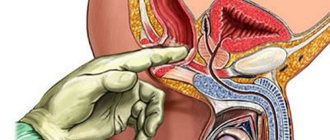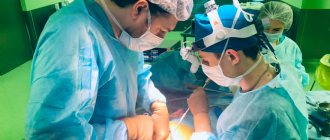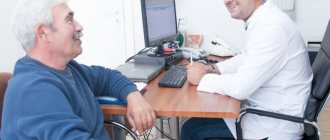Perhaps no other specialist is put off visiting as much as a dermatovenerologist. There is a stereotype that it is shameful to suffer from an illness that is part of the specialty of such a doctor. In fact, any disease is easier to treat if it is detected as early as possible. A dermatovenerologist specializes in the detection, prevention and treatment of skin and sexually transmitted diseases. Not all of them are sexually transmitted, and the everyday or hereditary origin of the disease is even more likely, which is why it is unreasonable to feel awkward and hesitate to visit a doctor.
How do sexually transmitted diseases differ from sexually transmitted infections (STIs)?
Classic venereal diseases include gonorrhea, syphilis, chancroid and several other diseases that are not common among Russians, but they all require a systematic dispensary approach. STIs are the same venereal diseases, but not classic, but modern, although these pathogens were discovered recently, and infections most likely existed a long time ago.
Formally, trichomoniasis, chlamydia, ureaplasmosis, genital herpes and human papillomavirus are also sexually transmitted diseases, but they can be observed and treated by gynecologists and urologists, since patients come to them with organ manifestations of STIs, and not because of the presence of an infectious agent. The agent is detected during examination, while the clinical manifestations of all STIs are very similar, which cannot be said about classical sexually transmitted diseases - they have their own typical “face” and can be transmitted through everyday contact without sexual contact. HIV infection is so complex that it has been classified as a separate section of infectious diseases.
The main difficulty in identifying sexually transmitted diseases and STDs is their asymptomatic course. In most cases, a person does not feel any symptoms of the disease, but the presence of a hidden infection in the body can seriously affect health in the future.
Chlamydia, ureaplasmosis and mycoplasmosis lead to prostatitis in men, and to inflammatory diseases of the uterus and appendages in women. The human papillomavirus (HPV) can cause cancer of the cervix, vulva, and penis. Hepatitis B virus – liver cancer.
If you are looking for where to get a consultation with a dermatovenerologist in the Presnensky district, call ProfMedLab: +7 (495) 120-08-07.
Venereologist consultation
If symptoms occur, you should immediately consult a doctor! Consultation with a venereologist is also necessary if you have had unprotected sexual intercourse with an unfamiliar partner, since some forms of the disease may be hidden. A venereologist will also give advice if you have questions about preventive measures.
Sexually transmitted diseases are called sexually transmitted diseases (STDs) or sexually transmitted infections (STIs). The causative agents can be bacteria and viruses, as well as arthropods and protozoa, yeast fungi.
Venereologists are sounding the alarm. Recently, outbreaks of infections have increased significantly. This is primarily associated with the early onset of sexual activity with almost zero awareness of prevention. Secondly, frequent changes of partners and non-use of mechanical protective equipment during sexual intercourse. Thirdly, frequent cases of self-medication, which leads to chronic forms and are difficult to treat.
Skin diseases
Dermatovenerology covers chronic and acute skin diseases. Chronic, as a rule, not contagious: psoriasis, seborrhea, vitiligo, eczema, rosacea. Acute, in most cases, are represented by fungal and viral skin infections, which are not always harmless to others, and autoimmune processes: dermatoses, lichen planus and lichen planus. Today it is believed that fungal skin lesions - candidiasis and dandruff - do not occur in a completely healthy person, and viral ones, for example, warts, papillomas and herpes, can settle against the background of absolute health.
In addition, people come to the dermatovenereologist with acne - pimples, the cause of which is a hormonal imbalance, and with congenital nevi - moles. Today, these skin formations are more often entrusted to cosmetologists for treatment, but cosmetology is the same as dermatology without venereology, and a cosmetologist must have a dermatovenerological education.
A visit to a dermatovenereologist is necessary for skin rashes of any shape and type, the appearance of several ulcers and pustules, with extensive areas of peeling and weeping skin lesions, with discharge from the genital tract, with itching of the genitals and, of course, if wounds and ulcers are found on them. A dermatovenerologist treats intimate diseases, so he knows how to keep secrets and is delicate, by definition.
To help the doctor in diagnosis, the following are provided:
- Blood tests for pathogens;
- Bacteriological and microscopic examinations;
- Cytological and histological studies;
- Immunological and allergological testing;
- Determination of genetic profile;
- Dermatoscopy;
- Biopsy of skin lesions.
Treatment methods, examination and tests
A dermatovenerologist has many different techniques, but the most important diagnostic method is examining the patient. The specialist examines the patient’s genitals in order to identify possible pathological changes, as well as rashes in intimate places.
The patient is required to undergo tests and examinations, since even an experienced doctor does not treat “by eye”. The laboratory specialist takes the necessary material for the following examination methods: blood test, urine test, smear. The patient's blood is also tested for antibodies. To clarify the diagnosis, the PCR method can be used, and scraping of the genital mucosa can be prescribed. If there are skin diseases of clearly infectious origin, additional blood tests are prescribed, but only a qualified specialist can tell their name. Having accurate examination results in hand, the doctor can treat the patient.
To eliminate the disease, the doctor may prescribe local medications, as well as drug treatment. In addition, the doctor’s recommendation may include maintaining personal hygiene and proper nutrition. It is worth noting that these simple points can prevent the occurrence of most dermatovenerological diseases. If we talk about surgical intervention, then such a decision can be made by a doctor, relying solely on test results and excluding the possibility of non-surgical treatment.
What does a dermatovenerologist treat?
Diseases that are treated by a dermatovenerologist:
- psoriasis
- eczema
- acne
- dermatitis
- viral diseases (including those caused by oncogenic processes and the herpes virus)
- esudative diathesis
- furunculosis
- molluscum contagiosum
- fungal diseases of the skin and nail plate
- vitiligo
- lichen
- gonorrhea
- syphilis
- ureaplasmosis
- mycoplasmosis
- chlamydia
- bacterial urethritis
- trichomoniasis
- candidiasis
- gardnerellosis
- human papillomavirus infection
- venereal diseases
What symptoms should you contact a venereologist for?
If you notice at least one manifestation, immediately go to the doctor:
- burning and itching observed in the genitals,
- enlarged lymph nodes,
- discharge of various types, often with an unpleasant odor,
- the presence of spots on the skin or mucous membranes,
- painful sensations when urinating,
- the appearance of ulcers or blisters,
- pain or discomfort during sexual intercourse.
The fact is that many often do not pay attention to minor manifestations of symptoms in the initial period of the disease and often come to us with a complicated form of STD.
Making an appointment with a dermatologist
Medical dermatologists are competent specialists who master all modern methods of diagnosis and therapy. Venereologists in Chelyabinsk have extensive experience and regularly improve their skills.
Advantages of visiting our clinic:
- individual approach;
- tactful attitude;
- diagnostics using new equipment;
- prescribing effective medications and procedures;
- recovery from any diagnosis;
- no complications or relapses.
During consultations, all terms are explained to visitors in clear language. The price of diagnosis and treatment is discussed in advance.
The cost of an appointment with a dermatovenerologist is 1300 rubles.
Children's specialist
An examination by a dermatovenerologist is relevant even for children. After all, diseases can be transmitted to babies at birth from the mother’s body. In this case, diseases can manifest themselves both during the first days of life and “sleep” for a long time, waiting for a decrease in immunity. Therefore, there is a separate specialist - a pediatric dermatovenerologist who treats manifestations of STDs in children. This doctor can also examine and prescribe treatment for a child who suffers from dermatological diseases caused by exposure to the sun, allergens, etc.
Treatment in children must be approached in a special way. Therefore, under no circumstances should you visit an “adult” dermatovenerologist. Children will not be able to tolerate taking therapeutic drugs prescribed to adults without complications . Instead of cytostatics and corticosteroids, younger patients are prescribed immunosuppressive medications, which reduce allergic reactions.
You can contact a child specialist with both infants and middle-aged children. The reason to visit a doctor is the appearance of crusts on the skin, rashes, itching, redness, and blisters.
A pediatric specialist treats:
- trichomoniasis;
- chlamydia;
- psoriasis;
- mastocytosis;
- lichen;
- HPV;
- and much more.
After consulting with a specialist about various skin diseases, the physician may refer the patient for a smear or other diagnostic method
Dermatoscopy in Yekaterinburg
Dermatoscopy is the examination of moles, warts, and birthmarks for neoplasms at high magnification using a dermatoscope. The method helps to identify malignant skin tumors at an early stage.
What does the doctor look at during dermatoscopy?
The doctor analyzes the symmetry, whether the edges are smooth, whether the color of each object is uniform. If dermatoscopy is performed to monitor the growth of objects, the doctor compares the condition of the object with the original one.
Advantages of the dermatoscopy method
Dermoscopy research has advantages over histological methods:
- simple and affordable
- not traumatic
- allows melanoma to be detected at an early stage
- the method has no contraindications or restrictions
- the patient receives results immediately
Cost of dermatoscopy
In our Center, the cost of the study is lower than the average market price for dermatoscopy in Yekaterinburg - 459 rubles.
When to contact a dermatologist for dermatoscopy:
- there are many moles on the body
- there are moles on the back, on the head (impossible to observe for yourself)
- new moles have appeared
- one mole of different colors
- the mole is not symmetrical, has uneven edges
- before the desired removal
- loved ones had melanoma
If after dermatoscopy the doctor makes a positive decision regarding the removal of a wart or condyloma, you can do this in our Center.
How to remove warts
To remove a wart, the method of electrocoagulation using high frequency current is used. After local anesthesia, the doctor touches the heated electrode to the tumor and acts on it for several seconds. The doctor evaluates the density of the object and can increase the exposure time to one minute. The wart is then treated with an antiseptic. At home, the patient continues treatment for several days until the wart falls off on its own.
Removing a wart using electrocoagulation is easy and safe
electrocoagulator
- The blood vessels around the object are sealed and bleeding does not occur.
- High temperature kills bacteria, the risk of infection is minimal.
- Very short exposure time.
- You can remove several warts in one session.
- No pain during the session.
Contraindications for the procedure
- Suspicion of malignancy of the neoplasm
- Large vessels in the area of the wart
- Inflammatory processes in the area of removal
Before removing a wart, you need to consult a specialist.
Price for procedures:
| Name | rub. |
| Remove viral wart | 500 |
| Remove viral condyloma | 459 |
Testing for fungal diseases
A Wood's lamp is used to test for fungal diseases. This is a small fluorescent lamp that emits ultraviolet light. When the light of this lamp hits the affected areas of the skin, fungi, dermatosis, oncology and other diseases are intensively illuminated with bright colors. Diagnostics are carried out in less than 1 minute in complete darkness. Diagnostics using the Lamp allows you to identify the onset of skin diseases that are not visible from the outside. A contraindication for the procedure is the presence of open wounds at the diagnostic site.
| Cost of testing for fungal diseases Luminescent study (using a Wood's lamp) 184 rub. |









